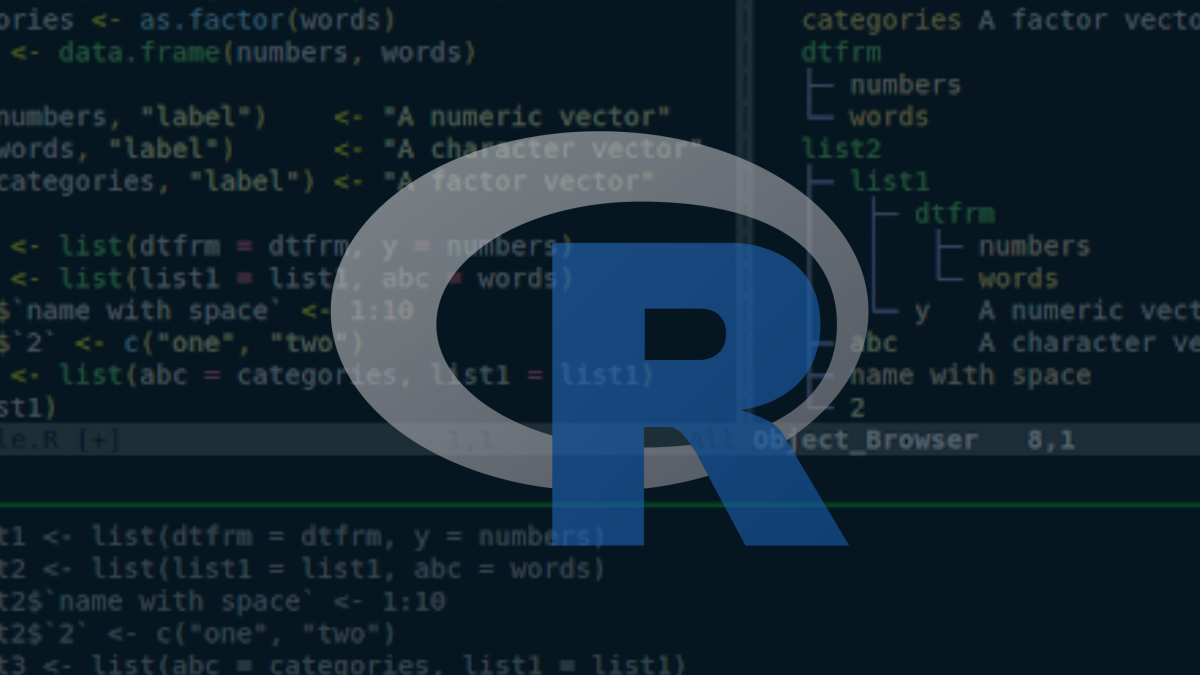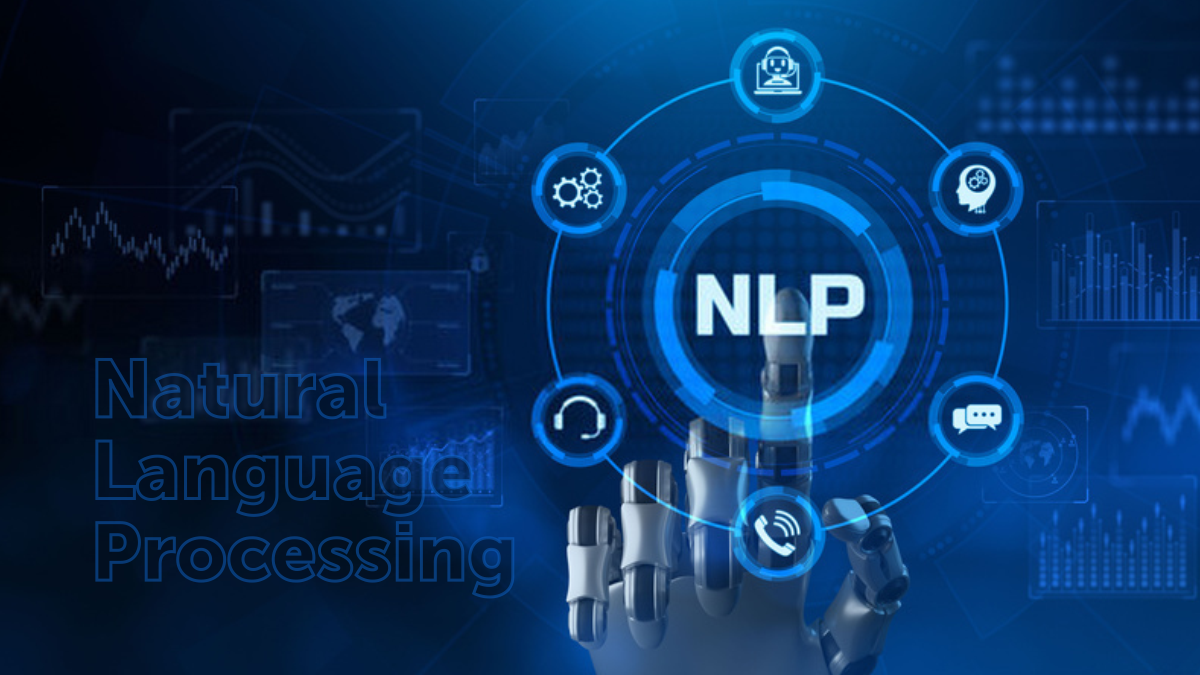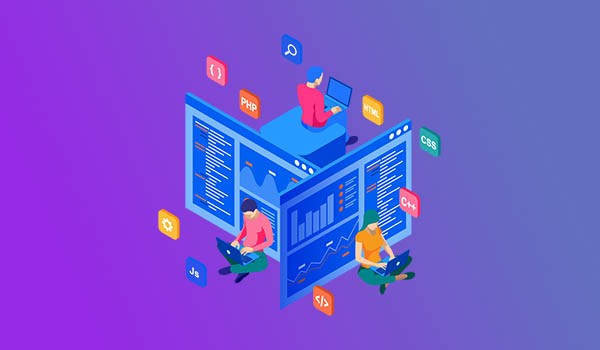Learn Data Science Courses in Bangalore
Our School of Data Science will equip you with the necessary knowledge and skills to shine in the data science career. Enroll for Data Science courses in Bangalore. Enroll for Data Science courses in Bangalore

Best Data Science Institute in Bangalore
Data has become the next currency and Data science professionals are in huge demand for their skills and expertise. Ours is the only data science training that gives you the edge by providing in-depth knowledge of all the modules that are required to kick-start your career in this amazing and growing field. The course covers all the steps in data science including data collection, extraction, cleansing, exploration, transformation, feature engineering, data mining.
- Job placement centric program
- Flexible Online & Offline Classes
- Work on Real-Time Projects
- Assignments Based Training
- No Technical Knowledge Needed



CHOOSE YOUR COURSE
We Have Tones of Course for You!!
Python is a versatile language that you can use for data science. In this Python course, you will learn how to use Python for data science.
We provide training to build your skills and have helped hundreds of students learn data science with R Programming.
Under our expert guidance, you’ll become a Pro Data Scientist who has sound knowledge and practical experience in statistics.
Learn how to program in R and Python, how to use machine learning algorithms, and how to build your own projects
Natural Language Processing is an integral part of machine learning and it helps to
develop heuristic programming.
Predictive Analytics helps to provide better predict and forecast on the basis of historical data.
Data visualization helps the data to be changed into an easily interpretable format. Become a data scientist.

Why School of Data Science?
School of Data Science is a Specialized Educational Center that Provides the best Data Science Courses in Bangalore.
- Learn From Live Projects
- 100% Placement Assistance
- Flexible Online & Offline Classes.
- No prior programming experience required

OUR FAQS
Frequently Asked Questions
Data science is one of the best career options in 2020 as the need for data science professionals is very high. A beginner in data science earns around 4.5 Lakhs per annum while the pay for experienced people depends on the number of years and the projects one has worked.
You can earn more than ₹8 lakhs with around 4-5 years of experience. One can easily earn ₹12 Lakhs per annum after 7 to 8 years of experience in data science. Not only is the pay high in this field, but even the job satisfaction is great in the field of data science and data analytics.
The present decade will also witness an exponential rise in the number of data science jobs. Hence, data science courses are one of the best courses to learn in 2020.
- Hewlett Packard
- International Business Machines Corp
- Amazon
- Flipkart
- SAP
- Honeywell
- ExxonMobil
- Western Digital
- Diageo
- Mindtree
Although anyone working professional or students with interest can take up this Data Science course, it requires certain prior experience in coding and developing. Individuals with a good understanding of mathematics, statistics, Python, R programming languages will be able to master the course easily. Work experience is not necessary but it will be of great help during the course as it helps in understanding the course topics and materials in a better way.
Data Science and Machine Learning courses can be finished in a period of 3 months. The course is
specifically designed for working professionals. So, it is scheduled to provide maximum learning
within a short time.
Data science and machine learning courses are held in two modes.
Online classes
Weekdays / Weekend classroom sessions.
If you are a student of online classes, you can attend the online classes at a time that is convenient to you. If you are taking the course in classrooms, then you can attend the class along with other batches.
Note: Although alternative arrangements can be made, it is expected of a candidate to attend all the classes without fail.
Data science is a specialized field that converges at the center of data collection, statistics, data interpretation and extrapolation. It has become an all-important field of science in the present day
world. Data is created by everything around us and by every action that we do. This huge data that is being constantly created has to be collected, segregated, and properly classified for easier
interpretation of data. The need for the above mentioned skills are there in all sectors of the industry.
Organizations large and small have a huge requirement for skilled data scientists to draw out practical insights from the data collected. Multinational companies like Amazon, Flipkart, HP, IBM, etc., provide a high compensation for data scientists. It makes Data science a suitable career option for anyone who is interested in a worry free profession.
Data Science Course Syllabus
Data Science is the new buzzword. But what exactly is it? Learn exactly what data science is, how it works, and the differences between different kinds of data scientists. Make sure you understand the basics before you go in. Enroll now!
Programming Basics & Environment Setup
- Installing Anaconda
- Anaconda Basics and Introduction
- Get familiar with version control, Git and GitHub.
- Basic Github Commands.
- Introduction to the Jupyter Notebook environment.
- Basics Jupyter notebook Commands.
- Programming language basics.
- Python Overview
- Python 2.7 vs Python 3
- Writing your First Python Program Lines and Indentation
- Python Identifiers
- Various Operators and Operators Precedence
- Getting input from User, Comments, Multi line Comments.
- Working with Numbers, Booleans and Strings
- String types and formatting
- String operations Simple if Statement, if-else Statement if-elif Statement.
- Introduction to while Loops.
- Introduction to for Loops
- Using continue and break.
- Class hands-on: programs/coding exercise on string, loop and conditions in the classroom.
- List, Tuples, Dictionaries Python Lists, Tuples, Dictionaries
- Accessing Values, Basic Operations Indexing, Slicing, and Matrixes Built-in Functions & Methods.
- Exercises on List, Tuples And Dictionary
- Class hands-on: Program to convert tuple to dictionary Remove Duplicate from Lists
- Python program to reverse a tuple Program to add all elements in list.
- Introduction To Functions
- Why Defining Functions
- Calling Functions
- Functions With Multiple Arguments.
- Anonymous Functions
- Lambda Using Built-In Modules
- User-Defined Modules
- Module Namespaces
- Iterators And Generators.
- Opening and Closing Files
- open Function, file Object Attributes close() Method ,Read, write,seek.
- Exception Handling, try-finally Clause Raising an Exceptions, User-Defined Exceptions.
- Regular Expression- Search and Replace Regular Expression Modifiers Regular Expression Patterns.
- Introduction to Numpy.
- Array Creation,Printing Arrays
- Basic Operation -Indexing, Slicing and Iterating
- Shape Manipulation – Changing shape,stacking and splitting of arrays.
- Vector stacking, Broadcasting with Numpy, Numpy for Statistical Operation.
- Pandas : Introduction to Pandas Importing data into Python
- Pandas Data Frames, Indexing Data Frames
- ,Basic Operations With Data frame,Renaming Columns,Subletting and filtering a data frame.
- Introduction,plot(),Controlling Line
- Properties,Subplot with Functional Method, MUltiple Plot, Working with Multiple Figures,Histograms Seaborn :
- Intro to Seaborn And Visualizing statistical relationships
- Import and Prepare data
- Plotting with categorical data and Visualizing linear relationships
- Seaborn Exercise
Installation Setup
Quick guide to RStudio
User Interface RStudio’s GUI3
Changing the appearance in RStudio
Installing packages in R and using the library
Development Environment
Overview Introduction to R
basics Building blocks of R
Core programming principles Fundamentals of R
Creating an object Data types in R
Coercion rules in R
Functions and arguments Matrices Data Frame
Data Inputs and Outputs with R
Vectors and Vector operation
Advanced Visualization Using the script vs. using the console
Data transformation with R – the Dplyr package – Part
Data transformation with R – the Dplyr package – Part Sampling data with the Dplyr package
Using the pipe operator in R Tidying data in R – gather() and separate()
Tidying data in R – unite() and spread()
Intro to data visualization
Introduction to ggplot2
Building a histogram with ggplot2
Building a bar chart with ggplot2
Building a box and whiskers plot with ggplot2
Building a scatter plot with ggplot2
Connecting To Datasource Creating dashboard pages
How to create calculated columns Different charts
Hands on on connecting data source and data cleansing
Hands on various charts
Getting Started With Visual Analytics Sorting and grouping
Working with sets
set action Filters: Ways to filter, Interactive Filters Forecasting andClustering
Hands on deployment of Predictive model invisualization
Working in Views with Dashboards and Stories
Working with Sheets Fitting Sheets
Legends and Quick Filters Tiled and Floating Layout Floating Objects
Coordinate points
Plotting Latitude and Longitude
Custom Geocoding
Polygon Maps
WMS and Background Image
Introduction to Text Analytics
Introduction to NLP
What is Natural Language Processing?
What Can Developers Use NLP Algorithms For?
NLP Libraries
Need of Textual Analytics Applications of Natural Language Processing
Word Frequency Algorithms for NLP Sentiment Analysis
Need of Pre-Processing
Various methods to Process the Text data
Tokenization, Challenges in Tokenization
Stopping, Stop Word Removal Stemming – Errors in Stemming Types of Stemming Algorithms – Table lookup Approach ,N-Gram Stemmers
String Similarity
Cosine Similarity
Mechanism – Similarity between Two text documents Levenshtein distance – measuring the difference between two sequences Applications of Levenshtein distance LCS(Longest Common Sequence )
Problems and solutions ,LCS Algorithms
Information Retrieval – Precision, Recall, F- score TF-IDF
KNN for document retrieval K-Means for document retrieval Clustering for document retrieval
Fundamentals of Math and Probability
- Basic understanding of linear algebra, Matrics, vectors.
- Addition and Multiplication of matrices.
- Fundamentals of Probability
- Probability distributed function and cumulative distribution function.
- Class Hand-on Problem solving using R for vector manipulation.
- Problem solving for probability assignments.
The mean,median,mode, curtosis and skewness Computing Standard deviation and Variance.
Types of distribution.
Class Handson: 5 Point summary BoxPlot Histogram and Bar Chart Exploratory analytics R Methods.
What is inferential statistics Different types of Sampling techniques Central Limit Theorem.
Point estimate and Interval estimate.
Creating confidence interval for population parameter Characteristics of Z-distribution and T- Distribution.
Basics of Hypothesis Testing Type of test and rejection region Type of errors in Hypothesis resting.
Type-l error and Type-ii errors P-Value and Z-Score Method T-Test, Analysis of variance(ANOVA) and Analysis of Covariance(ANCOVA) Regression analysis in ANOVA.
Class Hands-on: Problem solving for C.L.T Problem solving Hypothesis Testing Problem solving for T-test, Z-score test Case study and model run for ANOVA.
Basics of Hypothesis Testing Type of test and Rejection Region
Type o errors-Type 1 Errors,Type 2 Errors
P value method,Z score Method.
The Chi-Square Test of Independence Regression
Factorial Analysis of Variance
Pearson Correlation Coefficients in Depth Statistical Significance, Effect Size, and Confidence Intervals
Introduction to Data Cleaning
Data Preprocessing What is Data Wrangling?
How to Restructure the data? What is Data Integration?
Data Transformation
EDA : Finding and Dealing with Missing Values.
What are Outliers? Using Z- scores to Find Outliers.
Introduction to Bivariate Analysis,Scatter Plots and Heatmaps.
Introduction to Multivariate Analysis
Introduction To Machine Learning
What is Machine Learning?
Introduction to Supervised and Unsupervised Learning
Introduction to SKLEARN (Classification, Regression, Clustering, Dimensionality reduction, Model selection, Preprocessing)
What is Reinforcement Learning?
Machine Learning applications
Difference between Machine Learning and Deep Learning
Support Vector Machines Linear regression
Logistic Regression Naive Bayes
Linear discriminant analysis Decision tree
k-nearest neighbor algorithm Neural Networks (Multilayer perceptron)
Similarity learning
Introduction to Linear Regression
Linear Regression with Multiple Variables
Disadvantage of Linear Models
Interpretation of Model Outputs
Understanding Covariance and Collinearity
Understanding Heteroscedasticity
Case Study – Application of Linear Regression for Housing Price Prediction
Introduction to Logistic Regression.
Why Logistic Regression .
Introduce the notion of classification
Cost function for logistic regression
Application of logistic regression to multi-class classification.
Confusion Matrix, Odds Ratio And ROC Curve
Advantages And Disadvantages of Logistic Regression.
Case Study:To classify an email as spam or not spam using logisticRegression.
Decision Tree – data set How to build a decision tree?
Understanding Kart Model
Classification Rules- Overfitting Problem
Stopping Criteria And Pruning
How to Find the final size of Trees?
Model A Decision Tree.
Naive Bayes
Random Forests and Support Vector Machines
Interpretation of Model Outputs
Hierarchical Clustering
k-Means algorithm for clustering – groupings of unlabeled data points.
Principal Component Analysis(PCA)- Data
Independent components analysis(ICA) Anomaly Detection
Recommender System-collaborative filtering algorithm
Case Study– Recommendation Engine for e-commerce/retail chain
Introduction to Natural Language Processing (NLP).
Word Frequency Algorithms for NLP Sentiment Analysis
Case Study : Twitter data analysis using NLP
Basics of Time Series Analysis and Forecasting ,Method Selection in Forecasting
Moving Average (MA) Forecast Example,Different Components of Time Series Data ,Log Based Differencing, Linear Regression For Detrending
Introduction to ARIMA Models,ARIMA Model Calculations,Manual ARIMA Parameter Selection,ARIMA with Explanatory Variables
Understanding Multivariate Time Series and Their Structure,Checking for Stationarity and Differencing the MTS
Case Study : Performing Time Series Analysis on Stock Prices
Introduction to Deep Learning And TensorFlow
Neural Network
Understanding Neural Network
Model Installing
TensorFlow Simple Computation ,Constants And Variables
Types of file formats in TensorFlow
Creating A Graph – Graph Visualization
Creating a Model – Logistic Regression
Model Building using tensor flow
TensorFlow Classification Examples
Installing TensorFlow
Simple Computation , Contants And Variables
Types of file formats in TensorFlow
Creating A Graph – Graph Visualization
Creating a Model – Logistic Regression
Model Building
TensorFlow Classification Examples
Basic Neural Network Single Hidden Layer Model
Multiple Hidden Layer Model
Backpropagation – Learning Algorithm and visual representation
Understand Backpropagation – Using Neural
Network Example TensorBoard
Project on backpropagation
Convolutional Layer Motivation
Convolutional Layer Application
Architecture of a CNN
Pooling Layer Application
Deep CNN
Understanding and Visualizing a CNN
Introduction To RDBMS Single Table Queries – SELECT,WHERE,ORDER
BY,Distinct,And ,OR Multiple Table Queries: INNER, SELF, CROSS, and OUTER, Join, Left Join, Right Join, Full Join, Union.
Advance SQL Operations: Data Aggregations and summarizing the data
Ranking Functions: Top-N Analysis Advanced SQL Queries for Analytics.
Topics – What is HBase? HBase Architecture, HBase Components,
Storage Model of HBase, HBase vsRDBMS
Introduction to MongoDB, CRUD Advantages of MongoDB over RDBMS
Use cases
Mathematical Functions
Variables
Conditional Logic Loops
Custom Functions Grouping and Ordering Partitioning
Filtering Data Subqueries
COURSE OPTIONS
Best Data Science Training Institute in Bangalore Marathahalli, BTM Layout. We are responsible for the right education from day one of joining.
Live Virtual
Instructor Led Live Online
- Flexible pricing options
- Designed for Working Professionals/Students
- Real-life Case Studies
- Assignments
- Certification

Classroom
In - Person Classroom Training
- Flexible pricing options
- Designed for Working Professionals/Students
- Real-life Case Studies
- Assignments
- Certification
Course Duration and Fees
Kick start your Data Science career with this step-by-step learning approach, Learn real time projects with detailed explanation. By the end of the course, You will be confident enough to attend the interviews. Start today. Advance your career.
Course Fees :
₹ 45,000 ₹ 39000
- Course Duration - 5 weeks
- Week days ( Monday - Friday)
There are 3 batches we are taking classes:
- Batch 1 - 7:30 am - 8:30 am
- Batch 2 - 8:45 am - 9:45 am
- Batch 3 - 9:45 am - 10:45 am
- Weekend batch - 11 am - 1:30 pm
Get In Touch
Other Training Center
Most Trusted Data Science Training Institute in Bangalore Marathahalli. Sign up for our data science course today!
Marathahalli
#164, 2nd Cross, opposite to Novel MSR Park, Marathahalli Main Road, 2nd floor, Bengaluru, Karnataka- 560037
Indiranagar
No. 788, Rukmani, 9th A Main Rd, Indira Nagar 1st Stage, Bengaluru, Karnataka 560038
BTM Layout
2nd floor, 46, 7th Cross Rd, Mico Layout, Stage 2, BTM 2nd Stage, Bengaluru, Karnataka 560076
OMBR Layout
#388, Ground Floor, 1st A Cross Road, Main Road, Chikka Banaswadi, OMBR Layout, Bengaluru, Karnataka 560043
Get In Touch
Contact Us
- #164, 2nd Cross, opposite to Novel MSR Park, marathahalli main road, 2nd floor, Bengaluru, Karnataka- 560037
- Phone: +91 81970 95357
- Email: schoolofdatascience.in@gmail.com









